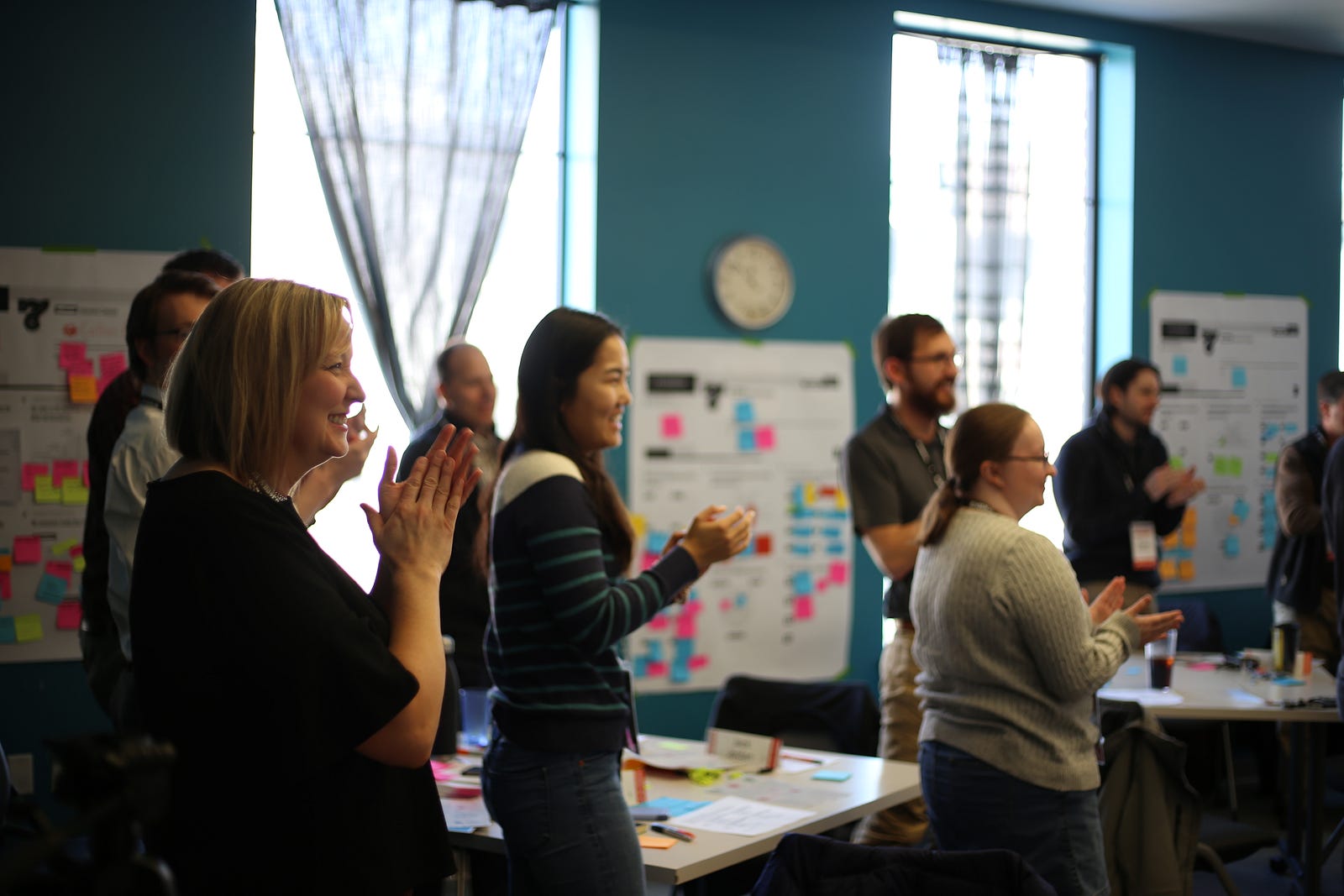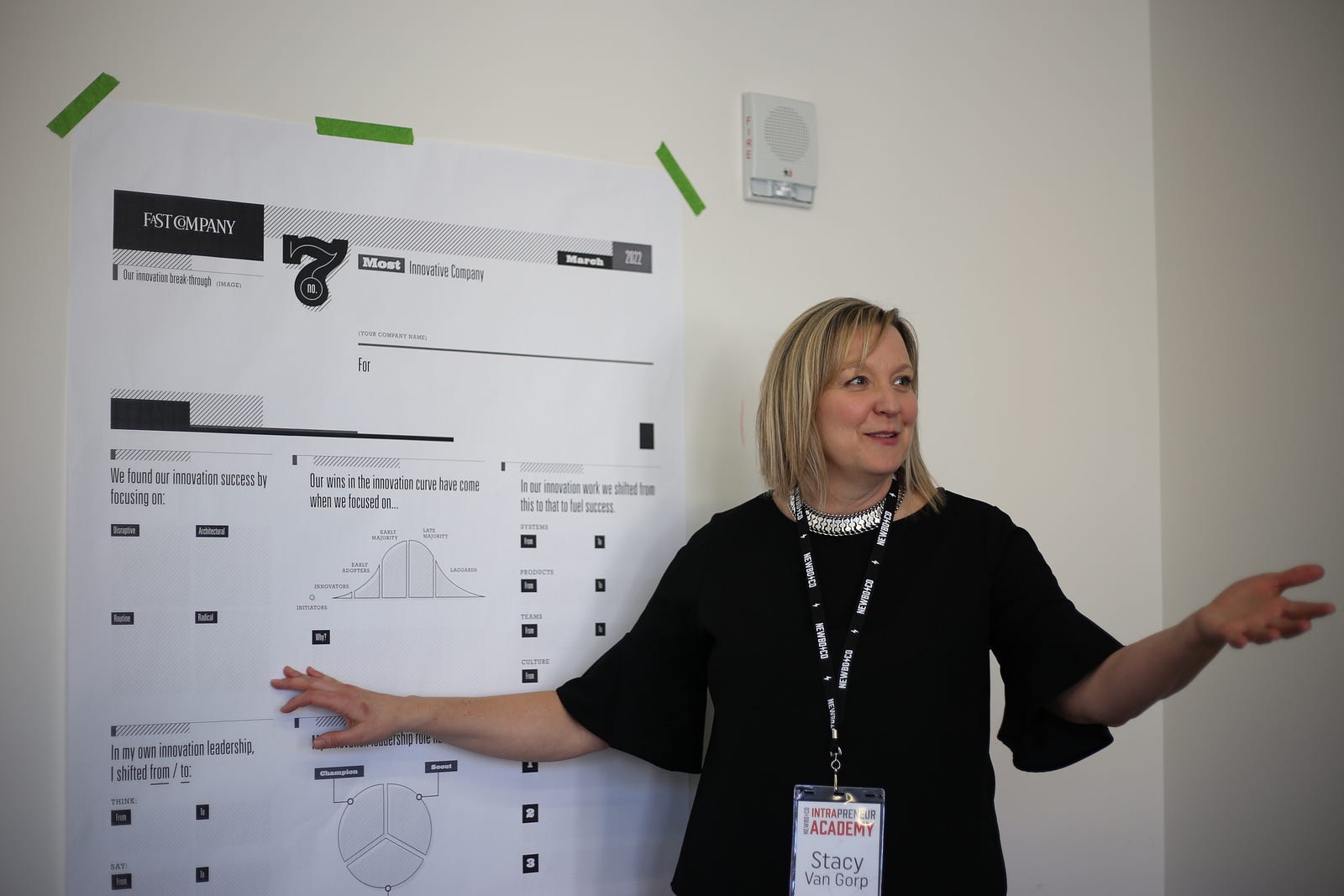The inaugural Intrapreneur Academy cohort completed their final workshop before their graduation. The teams spent the quarter learning how to make innovation part of their organizational strategy and action plans.

This quarter was about how to make innovation part of an organizational strategy and integrate innovation into action plans.
Innovation is required for any company that is not on track to meet its business objectives. Many companies declare innovation as a priority, but few go far enough to describe just how innovation will help it achieve its goals. In the absence of a well-defined innovation strategy, corporate innovators are virtually guaranteed to miss their mark, ultimately leaving innovation, itself, as a failed experiment.
The most successful innovation strategies will include:
- Well-understood mission and/or purpose statements
- A well-articulated vision which clearly states what success will look like, and when
- Execution of a sound innovation readiness plan
- A roadmap of expected innovation outcomes Investment in new capabilities to unlock new possibilities
Organizations can greatly improve their odds of innovation success by taking the time to define innovation parameters and provide strategic context to their innovation teams. At NewBoCo, we help companies assess and define their current state, craft and articulate their future state visions and create strategic action plans for bridging the gap.

The Case for Innovation
What does your company require from “innovation” in order to achieve its vision?
The term “innovation” is too frequently used as a buzzword to describe a set of creative activities that may or may not improve the business. Innovation, however, should be an integral, essential element of business strategy, not an ancillary activity. Despite the unknowns associated with innovation initiatives, top companies view innovation as a strategic element which has a grounded financial justification, clearly defined success measures, regular milestones and dedicated resources.
Learning objectives:
- This session will guide you through how to set an innovation strategy which answers the question, “What does my company require from innovation in order to achieve its vision?”.
- Set a shared vision for your company, and what considerations are necessary to execute on the vision.
- Map out and articulate the steps required to move your company from its current state to its desired state.
- You will be provided a template for building and presenting the case for innovation within your company, including how to make the financial justification, how to understand the innovation landscape, and how to define the benefits of innovation to the company.

Killing/Disrupting Your Company
Kodak was once a Wall Street darling, raking in more than $10 billion in sales at its peak and with 120,000 employees. The company built the first digital camera prototype, but failed to capitalize on it, and subsequently sold off its patents and filed for bankruptcy protection in 2012. The very same month, Facebook plunked down $1 billion for Instagram — and its 13 employees.
What causes companies to fail to keep their dominant marketplace position? What strategies enable disruptors to achieve success? We will explore examples of disruption to glean insights into how we can ensure our companies can leverage change to become stronger, and avoid being disrupted.
Learning objectives:
- Understand the distinction between product innovation and business model innovation — and how, together, they can fundamentally disrupt an industry
- Identify disruptive threats to your industry
- Establish internal consensus to address a potential threat
- Explore potential business killers to your company
- Develop strategies that allow your company to become the disruptor

Moving from Tactician to Strategist
Do you spend the majority of your time at work as a task-oriented tactician or do you think and operate strategically, like leaders do? In this session, learn how to shift your focus from being tactical or reactive to operating with a more strategic mindset.
Learning objectives:
- What it means to be strategic
- How to evaluate time being spent on strategic or tactical activities
- Four questions asked by strategic leaders
- How to create a personal plan to transition from being tactical to being more strategic

Innovation Roadmapping
When an organization commits to innovation, the work has only just begun. No innovation strategy is achievable without a strong strategic plan, as well as the systems required to move ideas from concept to launch. In this session, you’ll learn how to map the elements of your innovation strategies to ensure your organization’s initiatives gain traction.
Learning objectives:
- Play Remember the Future to identify what needs to change to achieve your vision
- Design a roadmap that defines your innovation goals, tactics, and governance system
- Prototype the innovation pipeline required to achieve your vision
- Learn how to balance and diversify your innovation portfolio

Big Grove Taproom Tour
Teams wil tour Big Grove Taproom on the inaugural cohort’s graduation day with one of the owners to learn more about the company’s expansion to Iowa City; craft beer canning, operation, and distribution model; and how to stay at the forefront of a growing Iowa industry.

